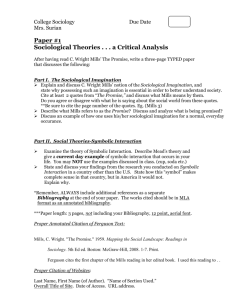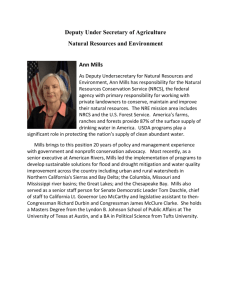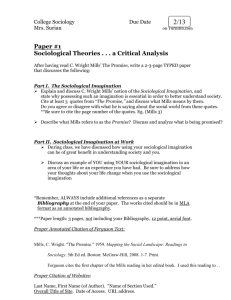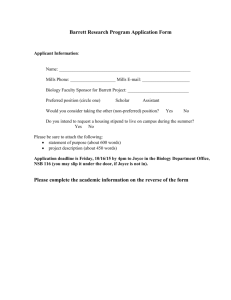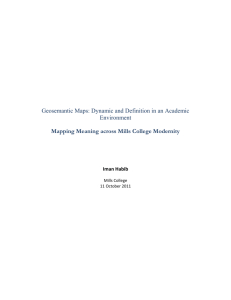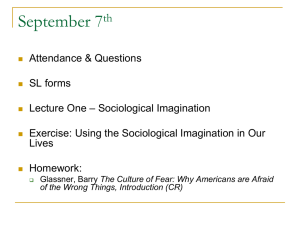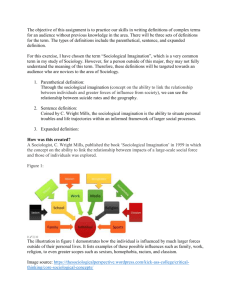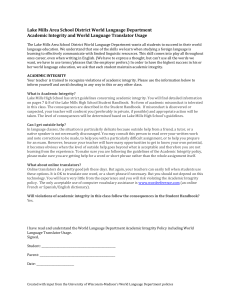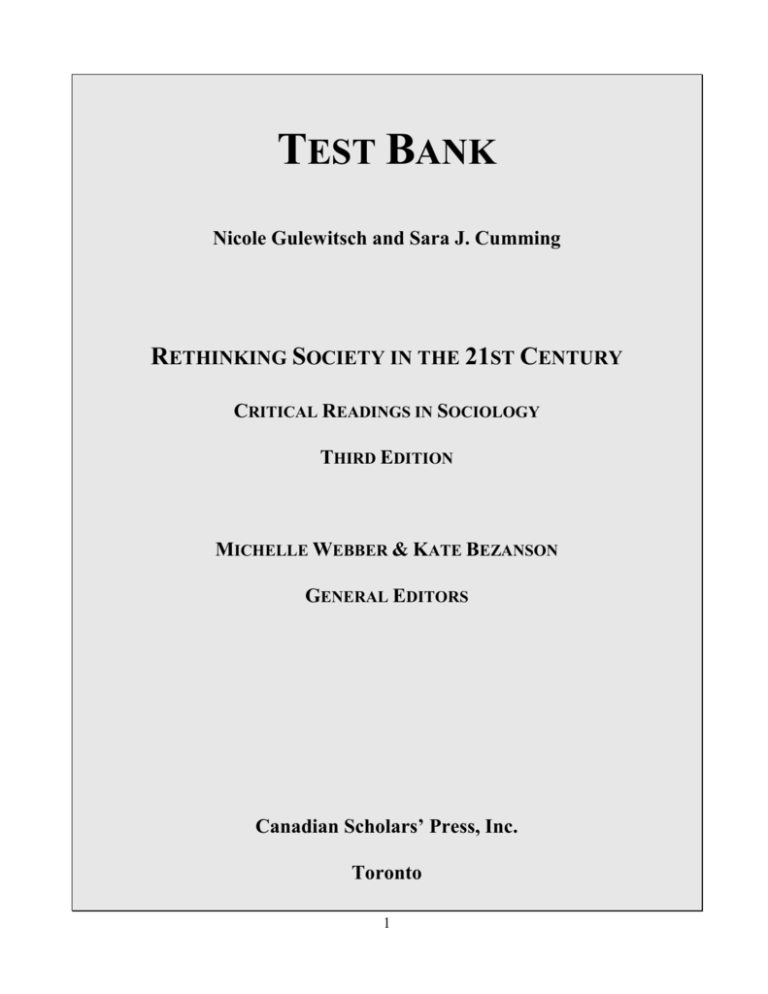
TEST BANK
Nicole Gulewitsch and Sara J. Cumming
RETHINKING SOCIETY IN THE 21ST CENTURY
CRITICAL READINGS IN SOCIOLOGY
THIRD EDITION
MICHELLE WEBBER & KATE BEZANSON
GENERAL EDITORS
Canadian Scholars’ Press, Inc.
Toronto
1
Rethinking Society in the 21st Century: Critical Readings in Sociology
Third Edition
Test Bank
Compiled by Nicole Gulewitsch and Sara J. Cumming
Canadian Scholars’ Press Inc.
180 Bloor Street West, Suite 801
Toronto, Ontario
M5S 2V6
www.cspi.org
Copyright © 2012 Canadian Scholars’ Press Inc. All rights reserved. No part of this publication may
be photocopied, reproduced, stored in a retrieval system, or transmitted, in any form or by any means,
electronic, mechanical, or otherwise, without the written permission of Canadian Scholars’ Press Inc.,
except for brief passages quoted for review purposes. In the case of photocopying, a licence may be
obtained from Access Copyright: One Yonge Street, Suite 1900, Toronto, Ontario, M5E 1E5, (416)
868-1620, fax (416) 868-1621, toll-free 1-800-893-5777, www.accesscopyright.ca.
Canadian Scholars’ Press Inc. gratefully acknowledges financial support for our publishing activities
from the Government of Canada through the Book Publishing Industry Development Program
(BPIDP) and the Government of Ontario through the Ontario Book Publishing Tax Credit Program.
2
SECTION 1: INTRODUCTION TO SOCIOLOGY
SECTION 1A: INTRODUCTION: THE SOCIOLOGICAL PERSPECTIVE
Chapter 1: The Promise
C. Wright Mills ................................................................................................................…………7
Chapter 2: In Defence of Sociology
Anthony Giddens .............................................................................................................………..12
SECTION 1B: CLASSICAL THEORY
Chapter 3: What is a Social Fact?
Emile Durkheim.……………………………………………………………………………….....16
Chapter 4: Manifesto of the Communist Party
Karl Marx and Friedrich Engels ......................................................................................………..20
Chapter 5: The Protestant Ethic and the Spirit of Capitalism
Max Weber.......................................................................................................................………..24
SECTION 1C: CONTEMPORARY THEORY
Chapter 6: Women’s Perspective as a Radical Critique of Sociology
Dorothy E. Smith .............................................................................................................………..29
Chapter 7: Panopticism
Michel Foucault ...............................................................................................................………..34
Chapter 8: Revisiting Gramsci
Diana Coben.....................................................................................................................………..38
Chapter 9: The Intersections of Race, Class, and Gender in the Anti-racism Discourse
George Sefa Dei………………………………………………………………………………......41
SECTION 1D: RESEARCH METHODS
Chapter 10: General Research Orientations
Alan Bryman, James Teevan, and Edward Bell ..............................................................………...45
Chapter 11: Becoming an Anti-oppressive Researcher
Karen Potts and Leslie Brown…………………………………………………………….……....50
3
SECTION 2: FOUNDATIONS OF SOCIETY: SOCIALIZATION, SOCIAL INTERACTION,
AND CULTURE
Chapter 12: Learning to Strip: The Socialization Experiences of Exotic Dancers
Jacqueline Lewis ..............................................................................................................………..53
Chapter 13: The Presentation of Self in Everyday Life
Erving Goffman ...............................................................................................................………..58
Chapter 14: Students’ Facebook “Friends”: Public and Private Spheres
Anne West, Jane Lewis, and Peter Currie........................................................................………..63
Chapter 15: Making a Difference: Ethical Consumption and the Everyday
Matthew Adams and Jayne Raisborough.........................................................................………..68
SECTION 3: MAJOR SOCIAL INSTITUTIONS
SECTION 3A: FAMILIES
Chapter 16: The Way We Weren’t: The Myth and Reality of the “Traditional” Family
Stephanie Coontz .............................................................................................................…….….73
Chapter 17: (Re)Constructing Women’s Resistance to Woman Abuse: Resources, Strategy Choice,
and Implications of and for Public Policy in Canada
Stephanie Patterson ..........................................................................................................………..77
Chapter 18: Beyond Normalization: An Analysis of Heteronormativity in Children’s Picture Books
Anika Stafford ..................................................................................................................………..82
SECTION 3B: THE ECONOMY AND LABOUR
Chapter 19: Globalization, Precarious Work, and the Food Bank
E.S. Lightman, A. Mitchell, and D. Herd ........................................................................………..87
Chapter 20: Neo-liberalism, Families, and Work-Life Balance
Kate Bezanson .................................................................................................................……….92
SECTION 3C: EDUCATION
Chapter 21: Enchanting McUniversity: Toward a Spectacularly Irrational University Quotidian
George Ritzer ...................................................................................................................……….97
4
Chapter 22: Keeping the Ivory Tower White: Discourses of Racial Domination
Carol Schick ....................................................................................................................………101
SECTION 3D: HEALTH, HEALTHCARE, AND AGE
Chapter 23: “Old People Are Useless”: Representations of Aging on The Simpsons
Darren Blakeborough .......................................................................................................………105
Chapter 24: Elder Abuse: The Canadian Experience
Elizabeth Podnieks ...........................................................................................................………110
Chapter 25: Gender, Race, and Health Inequalities
Ann Pederson and Dennis Raphael ..................................................................................………114
SECTION 4: ISSUES OF INEQUALITY
SECTION 4A: SOCIAL CLASS
Chapter 26: Building Their Readiness for Economic “Freedom”: The New Poor Law and
Emancipation
Ann O’Connell .................................................................................................................………119
Chapter 27: Introduction to New Slavery: A Reference Handbook
Kevin Bales ......................................................................................................................………124
Chapter 28: Class and Power: The Major Themes
John Porter .......................................................................................................................………127
SECTION 4B: GENDER AND SEXUALITIES
Chapter 29: The Many Faces of Gender Inequality
Amartya Sen.....................................................................................................................………130
Chapter 30: Sexual Ethics and Young Women’s Accounts of Heterosexual Casual Sex
Melanie A. Beres and Panteá Farvid................................................................................………137
Chapter 31: “Real Fast and Tough”: The Construction of Canadian Hockey Masculinity
Kristi A. Allain.................................................................................................................………140
SECTION 4C: ETHNICITY AND RACE
Chapter 32: Emerging Realities and Old Problems
Grace-Edward Galabuzi ...................................................................................................………148
5
Chapter 33: Black Learners in Canada
Rosalind Hampton ..........................................................................................................………152
Chapter 34: “Born” Freaks, “Made” Freaks, and Media Circuses: Systemic Management of Race
and Gender in the Reena Virk Case
Nicole Pietsch .................................................................................................................………157
SECTION 5: CRIME, MORAL REGULATION, AND SOCIAL JUSTICE
Chapter 35: Sex, Gender, and Generation: Age of Consent and Moral Regulation in Canada
Carol L. Dauda .................................................................................................................………162
Chapter 36: Learning to Protest: Youth Activist Cultures in Contemporary Urban Canada
Jacqueline Kennelly .........................................................................................................………167
Chapter 37: Gun Violence in Toronto: Perspectives from the Police
Ifeanyi Ezeonu .................................................................................................................………172
Chapter 38: The Canadian Human Rights Tribunal on First Nations Child Welfare:
Why If Canada Wins, Equality and Justice Lose
Cindy Blackstock ............................................................................................................………177
SECTION 6: POPULATION, GLOBALIZATION, AND
THE NEW WORLD ORDER
Chapter 39: Population: Delusion and Reality
Amartya Sen.....................................................................................................................………182
Chapter 40: Wilful Imaginings
Merryl Wyn Davies..........................................................................................................………186
Chapter 41: Globalization from the Subsistence Perspective
Sharon Ridgeway .............................................................................................................………190
6
SECTION 1A: INTRODUCTION: THE SOCIOLOGICAL
PERSPECTIVES
Chapter 1: The Promise, C. Wright Mills
Multiple Choice
1. Mills suggests that individuals feel trapped in the modern world because of
a) impersonal structural changes within the entire society
b) the pressures of modern life impinging on personal happiness
c) how fast-paced modern urban living has become
d) the reduction in leisure time for the average person
2. According to Mills, contemporary history is created through
a) structural movements within a society
b) the cyclical passing of social time
c) the success and failures of individual men and women
d) the superseding of capitalism over feudalism
3. According to Mills, the individual successes and/or failures of men and women create
a) tensions within modern marriages
b) contemporary history
c) the unpredictable nature of capitalism
d) the sociological imagination
4. Mills argues that neither the life of the individual nor the history of a society can be
understood without
a) psychological and economic investigation
b) examining global historical trends
c) qualitative and quantitative investigation
d) understanding both
5. Mills suggests that people tend not to understand their problems in terms of
a) historical changes and institutional contradictions
b) their relation to their economic condition
c) historical significance
d) none of the above
6. Mills suggests that the modern world has created a greater need for the “sociological
imagination” because
a) people are generally more educated in the present time
b) never in the history of the world have we experienced such fast and monumental
change
c) academics have demonstrated the limits of psychology
d) globalization requires the development of tolerance for diverse groups of people
7
7. According to Mills, one of the difficulties with the vast changes in the modern world is
a) the change is outstripping peoples’ capacity to develop an adequate moral
compass
b) technology is creating economic and social crisis
c) the global market cannot sustain the overproduction of trade goods resulting in greater
economic hardship
d) people are generally unable to cope with the changes and this is leading to increased
mental illness
8. According to Mills, what people need in this rapidly changing world is
a) greater access to information
b) greater access to the skills of reason
c) the sociological imagination
d) the political power to influence structural changes
9. The sociological imagination can be defined as
a) the ability to grasp the implications of globalization
b) a creative approach to the study of sociology
c) the integration of multiple sociological narratives into a cohesive and useful subject
area
d) the ability to grasp history and biography, and the relations between the two in
society
10. According to Mills, the ability to grasp history and biography, and the relations between the
two is called
a) a sociological imagination
b) an integrative academic approach
c) a multi-disciplinary academic approach
d) historical biographic investigation
11. Mills refers to the sociological imagination as
a) the best possible investigative stance
b) the promise
c) a tricky and difficult mind frame to obtain
d) the end result of sociology
12. The three main areas of inquiry involved in any great social investigation, according to Mills,
are
a) social structure/social order, the nature of social change, and the kinds of people
a society permits or creates
b) economic systems, the nature of social conflict and distress, and family systems
c) the forces of globalization, the patterns of social order and organization, and the
personal struggles within milieu
d) the nature of social change, economic systems, and family struggle
8
13. Another benefit to the sociological imagination as outlined by Mills, is that it enables its
possessor to
a) see past the social and examine the individual personality systems that influence
decision making
b) evaluate the larger historical context in terms of its personal meaning to the
individual and his/her own personal career
c) creatively envision multiple solutions for complex social issues
d) transcend the specific historical context of the individual and see the real social
structures that create their social reality
14. According to Mills, troubles can be defined as
a) situations which challenge society as a whole
b) situations which disrupt the economic well-being of a nation
c) situations which occur within the character of an individual and their immediate
social relations
d) situations which inhibit the social growth of particularly situated groups within a
social complex
15. According to Mills, milieu can be defined as
a) the global context impinging upon a nation
b) the ecological environment that structures the experiences of a nation state
c) the patterning of social structures within a particular political framework
d) the social setting that directly impinges upon one’s personal experience
16. According to Mills, issues are those things that
a) occur within the character of an individual and their immediate social relations
b) illuminate the global context that impinge upon a nation state
c) are created through multiple milieus as they are organized into institutions
d) are created through multiple troubles that create personal crisis for individuals
17. According to Mills, those aspects of social life that are created through the organization of
milieus into institutions of an historical society are called
a) issues
b) habitus
c) troubles
d) social structures
18. According to Mills, those aspects of the social setting that are directly open to one’s personal
experience, and to some extent one’s willful acts, are called
a) habitus
b) social structures
c) troubles
d) milieu
9
19. According to Mills, those aspects of social life which occur within the character of the
individual and within the range of her/his immediate social relations are called
a) psychosocial phenomena
b) habitus
c) troubles
d) issues
20. According to Mills, an example of a/an ____________ occurs when, in a nation of 50 million
employees, 15 million are unemployed.
a) trouble
b) issue
c) structural failure
d) capitalist crisis
True or False
1. According to Mills an example of an issue occurs when the divorce rate during the first four
years of marriage is 250 out of every 1000 attempts. (T)
2. According to Mills what people require in a rapidly changing world is access to information.
(F)
3. The sociological imagination can be defined as the ability to grasp history and biography and
the relation between the two. (T)
4. According to Mills, an example of an issue occurs when in a city of 100 000, only one person
is unemployed. (F)
5. According to Mills, milieu can be defined as the institutional organization of a particular
society. (F)
6. According to Mills, the facts of contemporary history are also the facts about the individual
successes or failures of people. (T)
7. According to Mills, troubles can be defined as those aspects of social life which occur within
the character of the individual and within the range of her/his immediate social relations. (T)
8. A benefit to the sociological imagination is that it enables the possessor to see past the social
and examine the individual personality systems that influence life course. (F)
9. Mills argues that neither the life of the individual nor the history of a society can be
understood without understanding both. (T)
10. Mills suggests that the modern world has created a greater need for the sociological
imagination because never in the history of the world have we experienced such fast and
monumental change. (T)
Short Answer
1.
2.
3.
4.
5.
According to Mills, define milieu. (10)
According to Mills, define troubles. (10)
According to Mills, define issues. (10)
According to Mills, define the sociological imagination (8–9)
What is it about the modern world which leads Mills to argue the necessity of the sociological
imagination? (8–9)
10
6. Why does Mills say that the modern person is experiencing “moral stasis”? (8)
7. Explain how milieu relates to issues, according to Mills. (10)
8. What are two examples that Mills gives to illustrate the difference between troubles and
issues? (10)
9. How can war be both a personal trouble and a social issue? (10)
10. How can marriage be both a personal trouble and a social issue? (10)
Discussion
1. What does Mills mean when he talks about the sociological imagination? (8–9)
2. What are the three sorts of questions that Mills suggests are the foundation to social
investigation and how do they relate to the sociological imagination? (9)
3. How does Mills discussion of trouble, milieu and issues relate to the sociological
imagination? (10)
4. Why do people have a sense of feeling trapped in the modern world according to Mills? (7)
5. Why does Mills suggest that information and skills of reason are not enough to equip people
for the strains of the modern world? (7–8)
6. Can you think of any examples that demonstrate the difference between personal troubles and
social issues and how they converge? Refer to Mills examples on page (10)
7. Why does Mills argue that unemployment is often not the responsibility of an individual? (10)
8. Do you find his argument around the nature of unemployment convincing? (10–11)
9. What are the issues that Mills outlines that translate marriage problems out of the personal and
into the social? (11)
10. What does the sociological imagination allow one to accomplish? (11)
11

